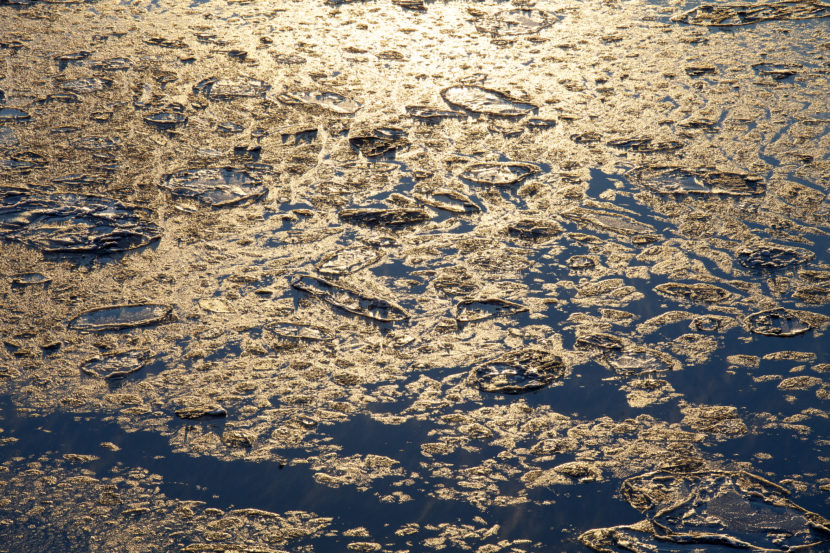
An ongoing natural gas leak in Cook Inlet is sparking a debate over pipeline safety. Hilcorp, the responsible company, said it can’t shut off the flow of gas through the pipeline without risking an oil spill. But a number of environmental groups disagree.
A recent letter from the federal agency overseeing the incident, the Pipeline and Hazardous Materials Safety Administration (PHMSA), revealed the leak began in late December. It’s currently estimated to be leaking between 203,000 and 225,000 cubic feet of gas per day, according to Alaska regulators. Dangerous ice conditions in Cook Inlet mean divers may not be able to start repairs for weeks.
Hilcorp — the biggest oil and gas producer in Cook Inlet — has repeatedly claimed shutting off the gas would be unsafe for workers and the environment. The pipeline carried crude oil until it was converted to gas in 2005. Hilcorp argues shutting off the gas could lead to an oil spill from the residual oil in the line.
Lois Epstein of the Wilderness Society called Hilcorp’s argument, “frankly bogus.”
Epstein, who has advised the federal government on pipeline safety, said there shouldn’t be much oil in the fuel line, explaining it would have been flushed out when it was converted to a gas.
Because Epstein doesn’t think there’s a big oil spill risk, her message to Hilcorp is this: “If you can’t repair it, you need to shut it down and wait until you can repair things safely.”
Epstein isn’t alone. Last week, several national environmental groups, including Greenpeace and the Natural Resources Defense Council, sent a letter to the federal government demanding it force Hilcorp to immediately shut down the pipeline. A local environmental group, Cook Inletkeeper, is lobbying state legislators to call for a shutdown.
But in a March safety order, PHMSA gave Hilcorp until May 1 to fix the line or shut it down. The agency agreed with Hilcorp that it would be too risky to shut down the gas line immediately.
Hilcorp responded to PHMSA’s letter in an emailed statement, saying, “ensuring the safety of our response personnel is our top priority as we proceed. We are pleased that PHMSA’s Proposed Safety Order acknowledges this, recognizing that immediate repair is not a viable option due to current conditions and concerns for the safety of personnel.”
But in the same letter, PHMSA also noted there’s a second pipeline nearby, “operating in an environment substantially similar” to the leaking gas line. That pipeline is carrying crude oil
Epstein argued if the crude oil pipeline was leaking instead, the federal government would be cracking down on Hilcorp.
“Hilcorp was, in fact, lucky that it was a gas line, because they are having this argument about whether they need to shut down or not,” Epstein said. “But if it was the oil line or if the breach were closer to the platform, I’m very confident that the state or federal governments would be shutting down this line.”
Both Hilcorp and the Pipeline and Hazardous Materials Safety Administration turned down interview requests.
The state Department of Environmental Conservation said it’s reviewing Hilcorp’s environmental monitoring plan and also can’t comment until that process is finished.
Elizabeth Harball is a reporter with Alaska's Energy Desk, covering Alaska’s oil and gas industry and environmental policy. She is a contributor to the Energy Desk’s Midnight Oil podcast series. Before moving to Alaska in 2016, Harball worked at E&E News in Washington, D.C., where she covered federal and state climate change policy. Originally from Kalispell, Montana, Harball is a graduate of Columbia University Graduate School of Journalism.




